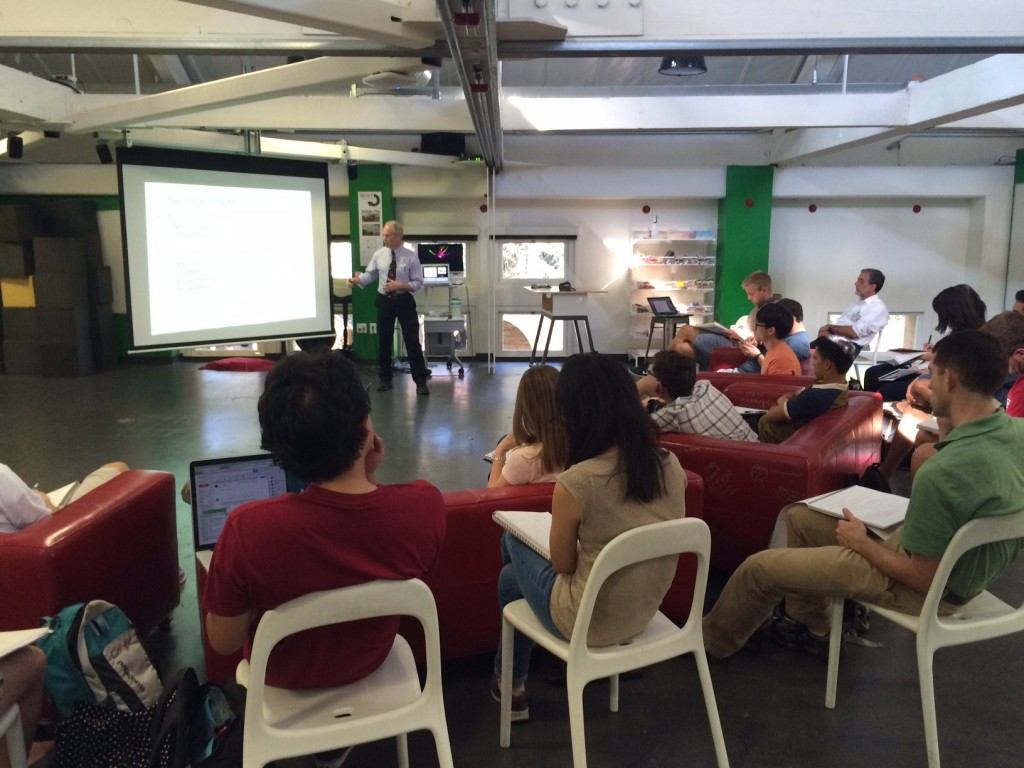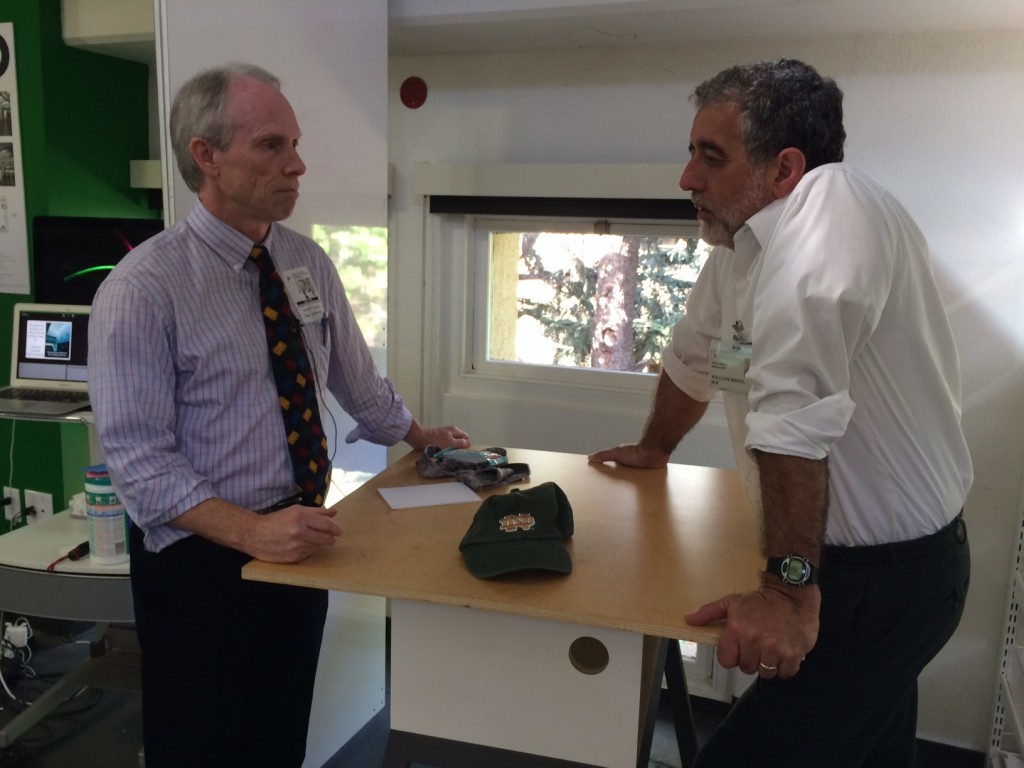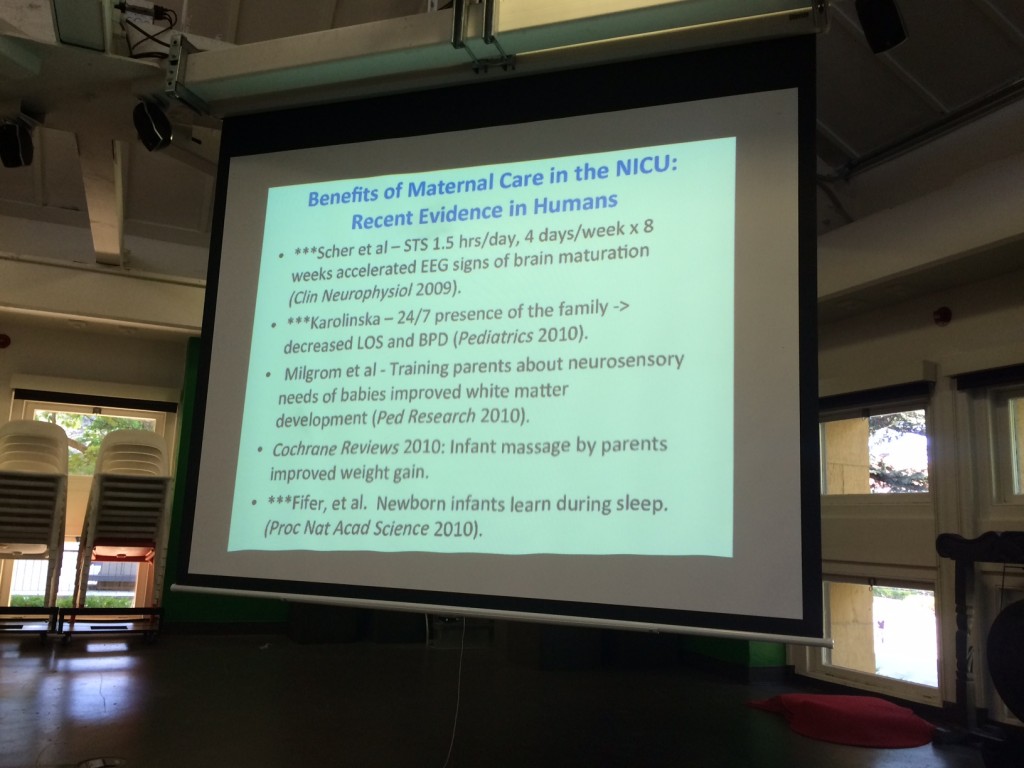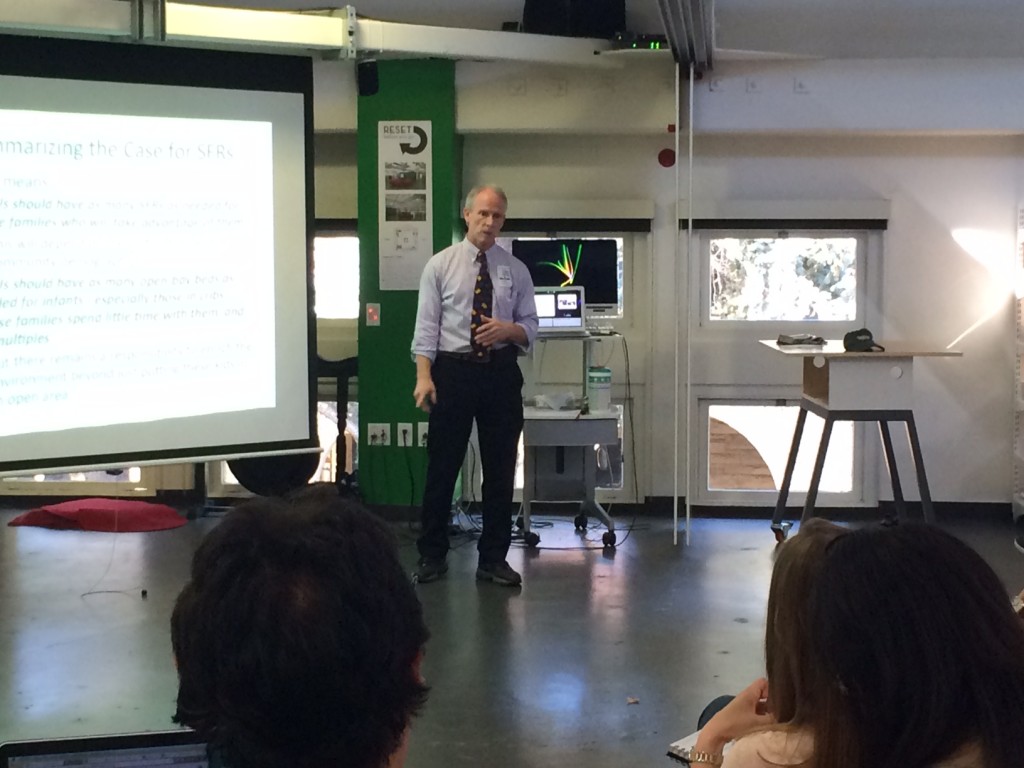Last Thursday we had a very special visitor from South Bend Indiana–Dr. Bob White, neonatologist and NICU design expert. Dr. White spoke to us about the micro and macro environments in the NICU, and what these two perspectives imply for design and operation. Dr. White stressed how NICUs are first and foremost an extremely artificial environment for babies. Incubators are deficient in every way from being held by the mother. The more skin-to-skin contact a newborn has with his/her mother, the more appropriate sensory stimuli the baby receives, which in turn can help lactation, aid in transmitting normal flora from the skin, and help regulate circadian rhythms in the newborn–a “virtuous cycle”. Dr. White also discussed the business case for single family rooms in NICUs. We learned that it costs an average of 1M up front to design single family NICU rooms, while saving 1M annually. (The Business Case for Single Family Rooms Adapted from Shepley et al 2014) Research shows that the physical environment in which patients are cared for and in which caregivers work has a measurable and quantifiable impact on them (Joseph, 2006a, 2006b, 2006c; Joseph & Ulrich, 2007; Ulrich, Zimring, Joseph, Quan, & Choudhary, 2004; Ulrich et al., 2008).  A point in Dr. White’s talk I found particularly interesting was that breast milk contains different levels of cortisol and melatonin at different times of the day which help to establish the circadian rhythms in a newborn. Now I am wondering if milk banks and NICUs label milk with not only the date, but the time of day it was expressed.
A point in Dr. White’s talk I found particularly interesting was that breast milk contains different levels of cortisol and melatonin at different times of the day which help to establish the circadian rhythms in a newborn. Now I am wondering if milk banks and NICUs label milk with not only the date, but the time of day it was expressed.
Students asked some great questions after Dr. White’s talk. Here are some highlights:
Student: How do you build in change for NICUs?
Dr. White: We used to build units where everything had it’s place, and then someone came along with a better monitor or a quieter refrigerator but didn’t fit into the “built in” concept. Build units you can take apart and reconfigure without tearing everything else down.
Student: Are there ways to optimize open bay rooms?
Dr. White: Noise reduction could help. One thing we could definitely design for is easy interaction between clinicians, and spaces for parents to interact together away from the bedside.
Student: Who holds the levers for change in this environment?
Dr. White: The OBs that deliver will tell their patients to deliver at the “nicer hospital” down the street with SFRs (single family rooms). It has nothing to do with the science or direct bottom line. It has to do with the bottom line of the big picture. Technology has a new purpose. Instead of it being what we use to cure the babies, there is this whole other areas of tech that helps us get more human with our babies. You guys can help by removing the tech between us, and help us get parents and babies get closer together.



